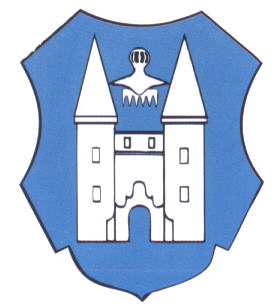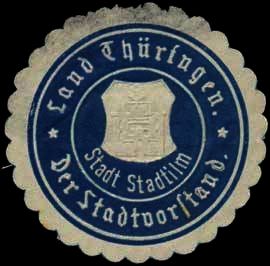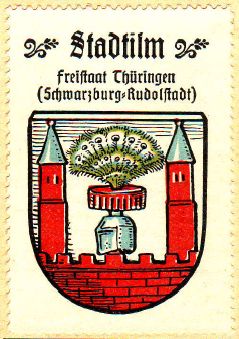Stadtilm: Difference between revisions
Knorrepoes (talk | contribs) m (Text replacement - "{{de}}" to "") |
Knorrepoes (talk | contribs) m (Text replacement - "|'''English''' ↵| {{blazon wanted}}↵" to "|'''English''' | blazon wanted ") |
||
| Line 17: | Line 17: | ||
|- | |- | ||
|'''English''' | |'''English''' | ||
| | | blazon wanted | ||
|} | |} | ||
Revision as of 12:10, 7 April 2023
STADTILM
State : Thüringen
District (Kreis) : Ilm-Kreis
Additions : 1950 Oberilm; 2018 Ilmtal (1996 Dienstedt-Hettstedt (1961 Dienstedt (1950 Oesteröda), Großhettstedt, Kleinhettstedt), Ehrenstein, Großliebringen (1975 Kleinliebringen), Nahwinden (1974 Döllstedt), Niederwillingen (1950 Behringen, Oberwillingen), Singerberg (1994 Dörnfeld an der Ilm (1969 Cottendorf), Geilsdorf, Gösselborn, Griesheim (1937 Hammersfeld), Singen, Traßdorf))
| German |
In Blau ein zweitürmiges silbernes Gebäude mit offenem Portal und Brückengang zwischen den Türmen; darüber schwebend ein silberner Kamm, überhöht von einem silbernen Spangenhelm. |
| English | blazon wanted |
Origin/meaning
The arms show the historical St. Marien church in the city, which was destroyed in 1899. The helmet and comb are derived from the arms of the Counts of Schwarzburg-Rudolstadt, who ruled the city for many centuries.
Contrary to other arms in Germany, the shape of the shield is officially described. It symbolises a fleece and thereby the importance leather production in the city for many centuries.
Hupp showed in the 1920s the arms in the composition as shown on the old seals and in different colours:
| Seal from around 1900 |
The arms by Hupp in the Kaffee Hag albums +/- 1925 |
Literature: Hupp, O: Kaffee Hag albums, 1920s; Benzing et al, 1984; Ulle, 1998


